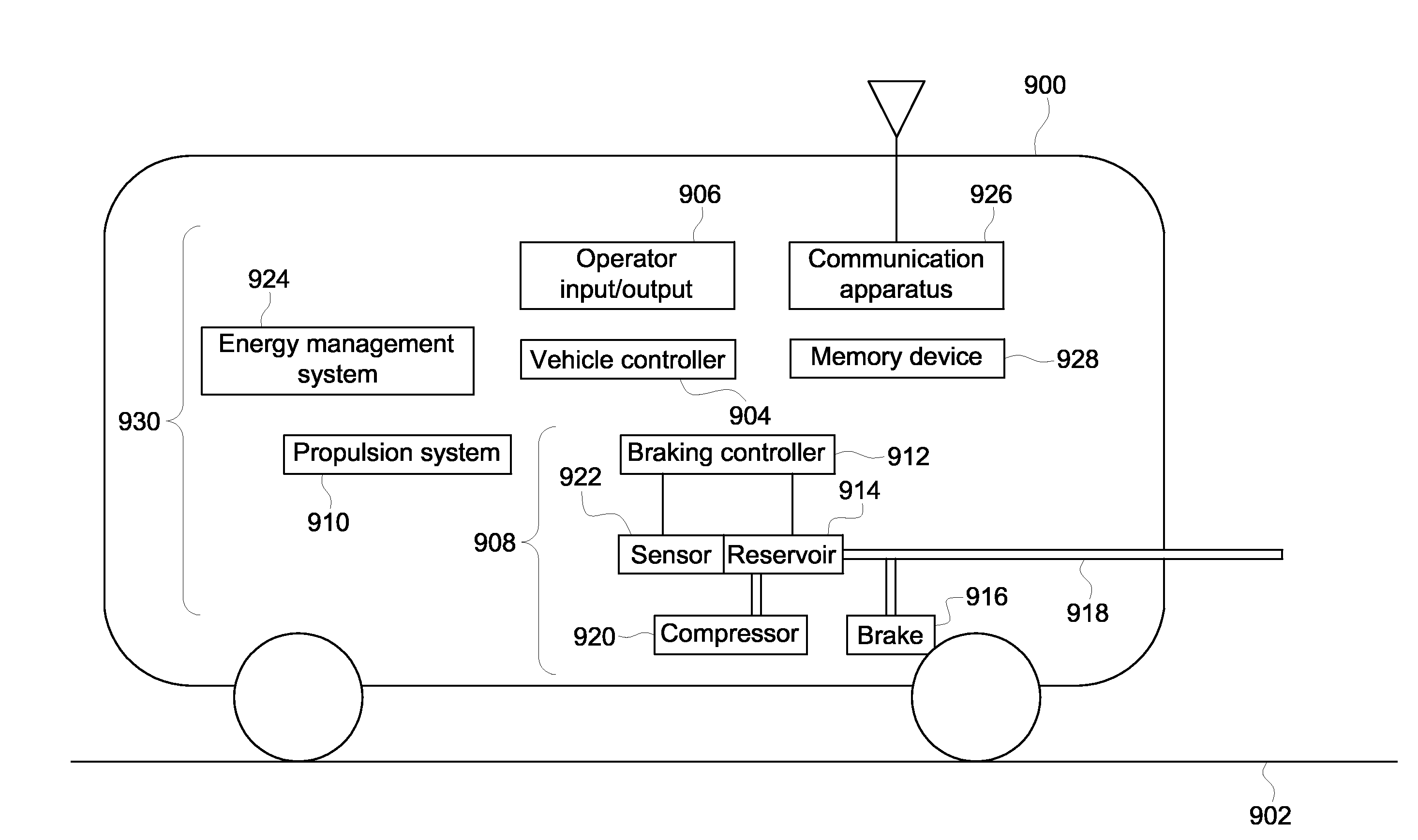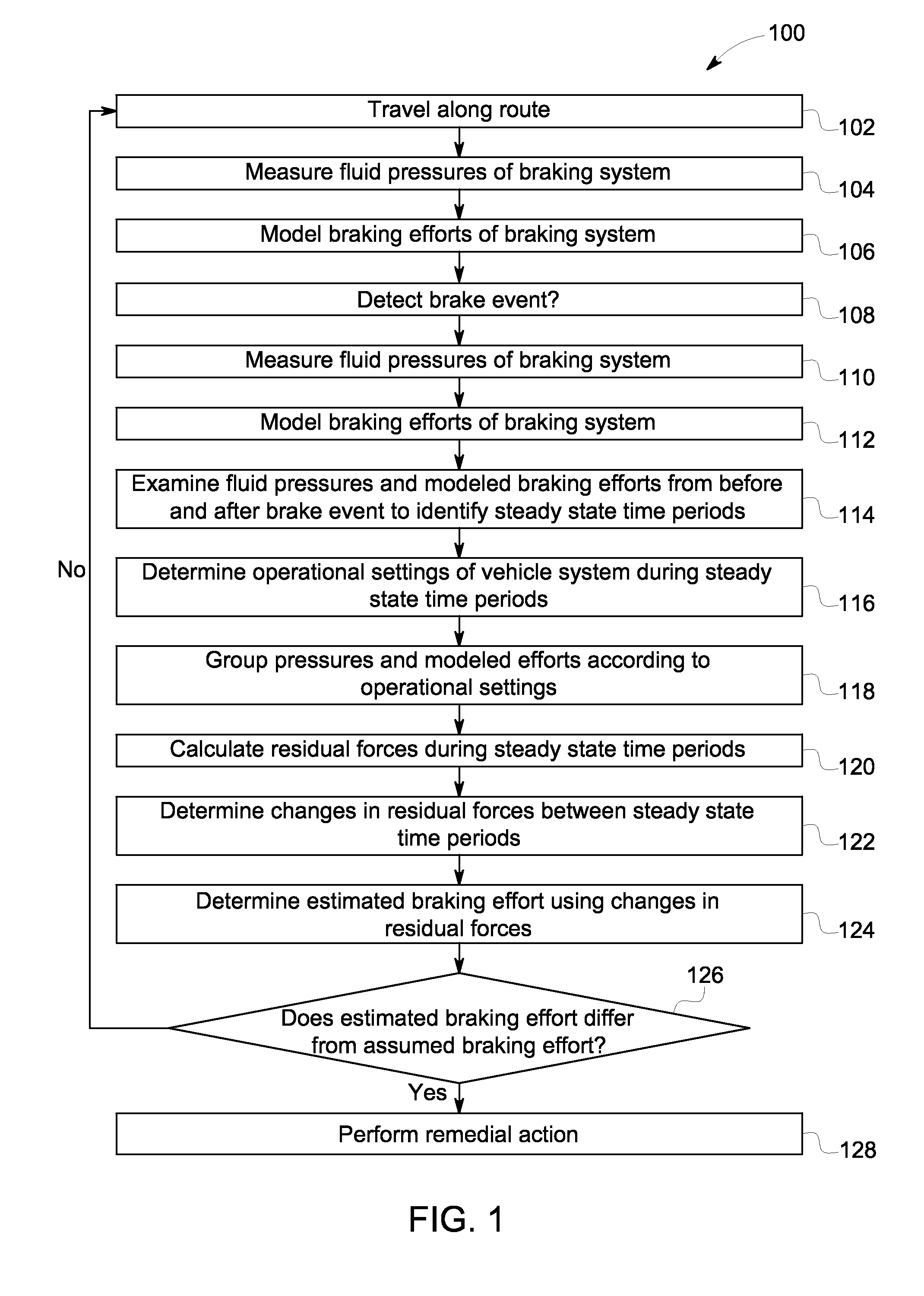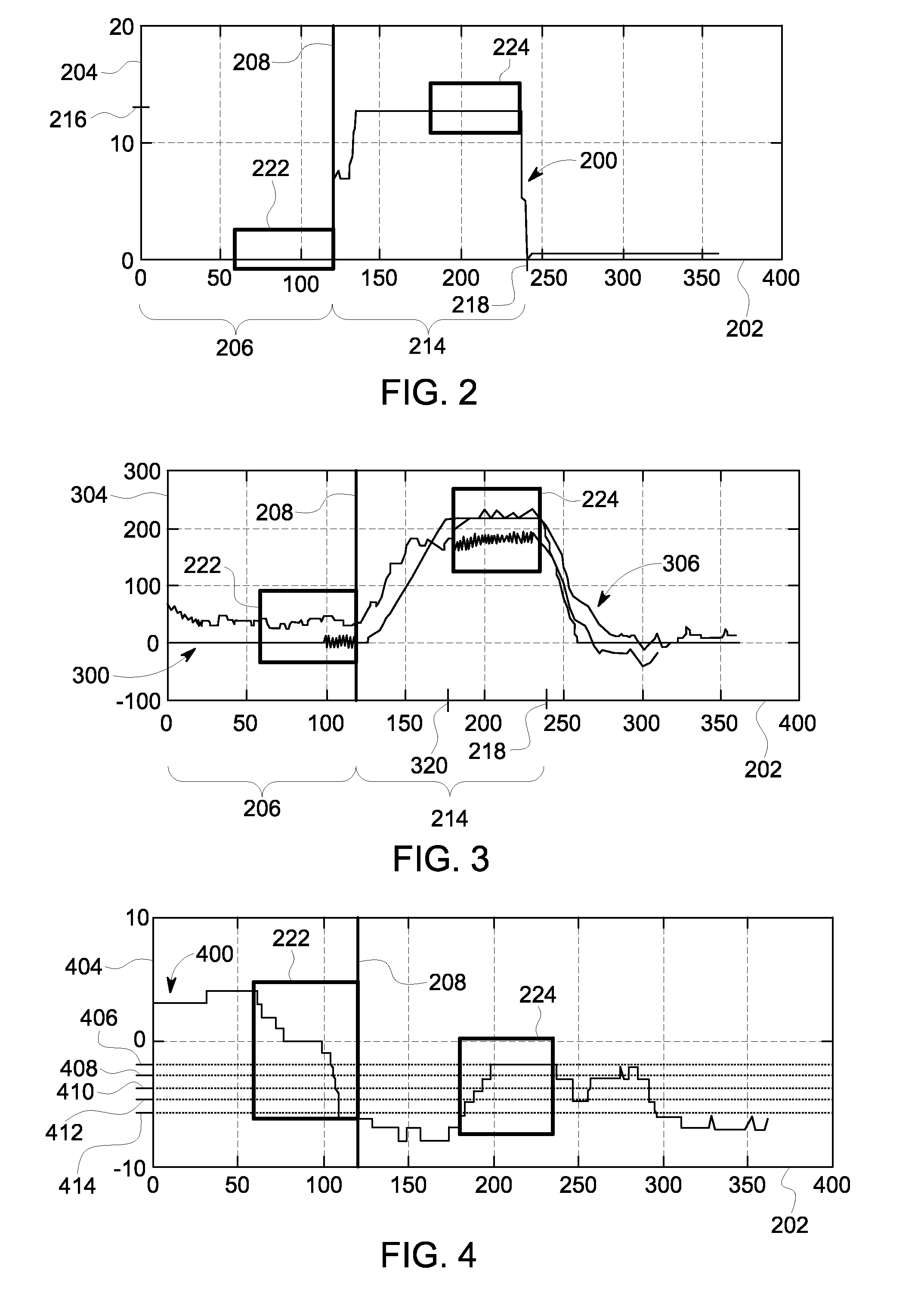System And Method For Monitoring Braking Effort
a technology of braking effort and system, applied in the direction of braking system, brake components, instruments, etc., can solve the problems of unsafe operation of vehicle systems, force applied, and degradation of braking systems
- Summary
- Abstract
- Description
- Claims
- Application Information
AI Technical Summary
Benefits of technology
Problems solved by technology
Method used
Image
Examples
Embodiment Construction
[0019]Embodiments of the inventive subject matter described herein relate to monitoring braking efforts generated by brakes of a vehicle system to stop or slow movement of the vehicle system. Braking efforts can include the resistive forces applied by brakes of the vehicle system that resist movement of the vehicle system. The braking efforts can be provided by air brakes of the vehicle system, such as a braking system that uses fluid pressure (e.g., air pressure) to keep the brakes disengaged and withhold the resistive forces but releases (e.g., reduces) the fluid pressure to engage the brakes and apply the resistive forces.
[0020]In one aspect, the fluid pressure of the braking system is monitored, such as by periodically or continuously measuring the fluid pressure held in a fluid reservoir onboard the vehicle system. Optionally, the fluid pressure can be measured in one or more conduits through which the fluid (e.g., air) is conveyed when the fluid pressure in the reservoir is re...
PUM
 Login to View More
Login to View More Abstract
Description
Claims
Application Information
 Login to View More
Login to View More - R&D
- Intellectual Property
- Life Sciences
- Materials
- Tech Scout
- Unparalleled Data Quality
- Higher Quality Content
- 60% Fewer Hallucinations
Browse by: Latest US Patents, China's latest patents, Technical Efficacy Thesaurus, Application Domain, Technology Topic, Popular Technical Reports.
© 2025 PatSnap. All rights reserved.Legal|Privacy policy|Modern Slavery Act Transparency Statement|Sitemap|About US| Contact US: help@patsnap.com



